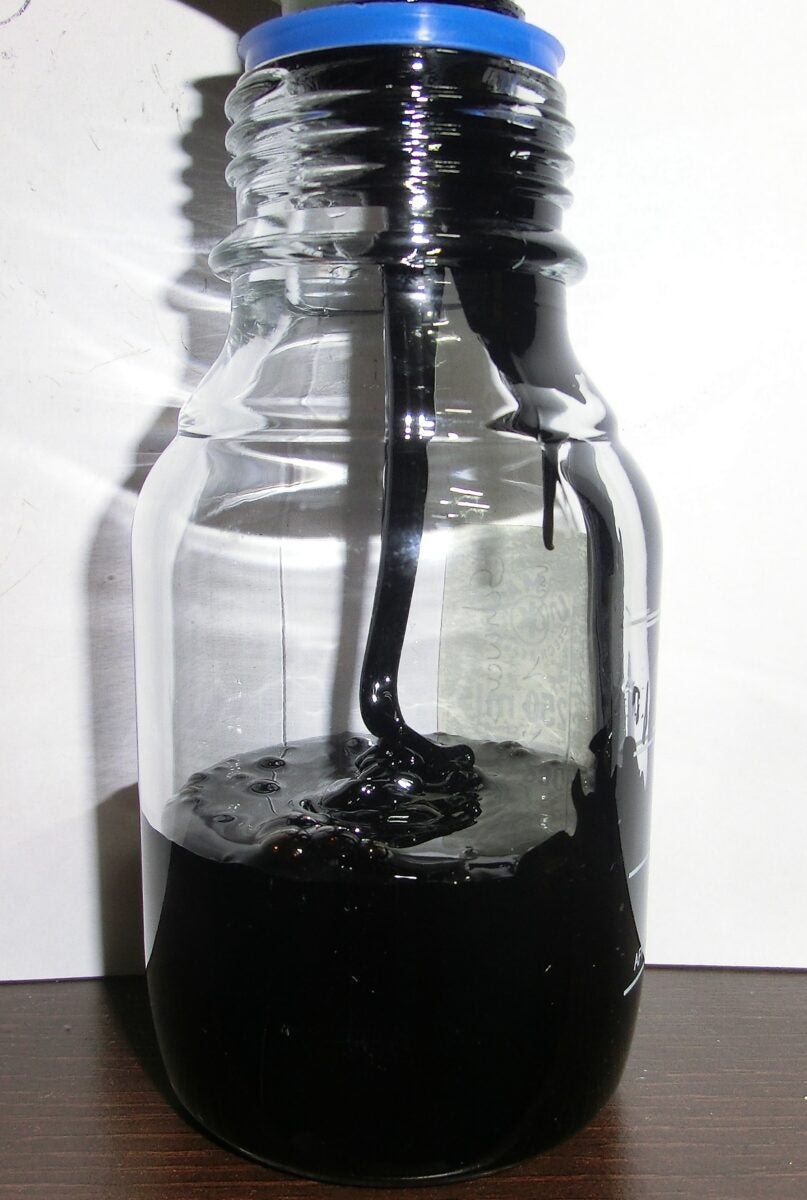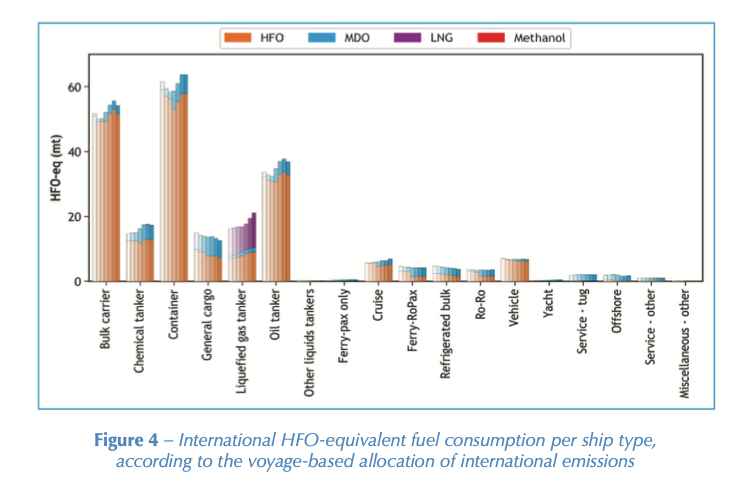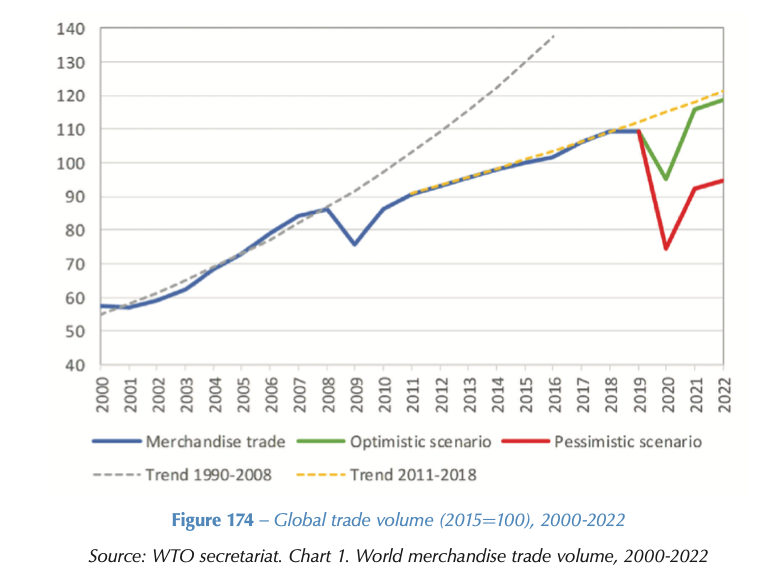As a subscriber to the greatest transportation newsletter on earth (or at least a reader of the greatest transportation news site on earth), you likely have a healthy skepticism when it comes to pledges to, say, decarbonize.
But for years, players like Shell Marine have been researching how to slash carbon emissions and implementing new technologies. The United Nations’ International Maritime Organization hasn’t been playing around when it comes to decarbonizing shipping, with one 2020 policy greatly limiting sulfur content in fuel.
Still, as the pace of global trade speeds up, shipping’s carbon footprint has gotten all the larger. From 2012 to 2018, the industry’s emissions increased by 10%, according to the IMO. Shipping accounts for 3% of all carbon dioxide emissions, also according to the IMO.
Good intentions aside, “heavy fuel oil” is still the cheapest way to run a fleet of ships. So, it’s going to take regulations — or a cost-effective, breakthrough green technology — to convince shipping scions to meaningfully reduce their reliance on this fuel.
To learn more about the current technologies and what needs to be done to decarbonize shipping, I chatted with Shell Marine’s Melissa Williams, who is the company’s vice president of sectors and decarbonization. Here’s a lightly edited version of our Zoom chat:
FREIGHTWAVES: Maybe it is just me, but I feel like 2022 has definitely kind of shifted my own sort of optimism when it comes to decarbonization and moving away from fossil fuels, just with everything we’ve seen happening in Russia and Ukraine.
So, how have the last six months shifted Shell’s stance to decarbonize? Has this sort of changed your timeline or your outlook?
MELISSA WILLIAMS: “The last six months have been very interesting, as you know. When you talk about Shell’s position, it really hasn’t changed. I think Shell is a leader in this space. Our ambition has, and always has been, to be a net-zero energy business by 2050.
“If anything, we’ve become more adamant in the past six months and in 2022. So what is our strategy in our ambition? One is collaboration. We realize we can’t do this alone. We need help. We need the ecosystem. So, collaboration is a key milestone in our strategy. And so for example, you see a lot about MOUs [memorandums of understanding, which are nonfinancial agreements for partnering organizations]. Why are we partnering with our customers? Why is that so important to us? [Because] when we sell a product to our customer, they burn it, that’s the carbon we are emitting, because we sold the product.
“So, it’s pertinent that we help them understand the decarbonization journey, partner with them to help them meet their decarbonization target.”
One of the best ways to reduce carbon output from the shipping industry is using fancy-schmancy lubricants
FREIGHTWAVES: It seems like there’s a kind of few different ways to move away from fossil fuels when it comes to shipping lines. You have LNG (liquefied natural gas), green methanol, ammonia, hydrogen, all these sort of different options. Maybe it’s a combination of those, but what do you think are kind of the best sort of fuels?
WILLIAMS: “Before we talk about fuels, let’s just take a step back and understand that the marine industry is going to be hard to decarbonize.
“One, zero carbon fuels are not readily available today.
“Number two, the long life cycle of the assets, about 20 to 40 years.
“The third thing is that it’s technically complex to electrify ships compared to other sectors. We need a new infrastructure for fuel, and the regulations are not readily available for shipping. There’s no global comprehensive policy. That is why the difficulty comes in and where the solutions are.
“So, what could be that solution? Well, in our strategy, we look at three ways to address that.
“One is avoid, which is just focus on the development and implementation of energy efficiency technologies. On existing vessels, how can we optimize to reduce the fuel that the vessel needs? We have software, such as the Just Add Water System and Air Lubrication. All these could reduce the fuel that the shipowner has to use up to 25%. We also can (use) lubricants that can reduce the fuel that we consume.”
Ships can only run on two types of fuel (besides, the infamous heavy fuel oil)
WILLIAMS: “The next aspect is reduction. So this is going to answer your question about the fuels. The only fuel that’s available today, that’s lower in carbon, is LNG. That’s for newbuild.
“But for existing vessels, we have our biofuels options.

“So when you talk about the transition, it’s not a one-day event; it’s going to be generations, because we need to build the assets to produce the green energy. But we shouldn’t have to wait for that perfect solution. We can start now. Every day that we can do something about it with either avoiding or reducing, that’s what we should do. Anytime there’s an opportunity to do a newbuild, dual-fuel vessels are the way to go. The only option that’s available today, so I will put that there. For existing vessels, it is reducing and optimizing the fuel that we use with digital solutions.
“And the third and final option, after we exhaust the avoid and reduce, is to offset. And that is where we go and we plant forests and trees to offset the carbon that’s being emitted.”
FREIGHTWAVES: I’m curious: How is it that you can use biofuels in sort of these existing vessels?
WILLIAMS: “There’s biofuels for the traditional fuel, but then there’s also biogases, methane gases. The gases have the same molecular structure as the LNG per se. That is why it’s able to work. It just comes from a source.
“So a cow, we capture the methane from their waste and a gas is gas, and so that is why that is able to work. When you talk about biofuels, hydrotreated vegetable oils, etc., they’re very similar.
“What we did for IMO 2020, when we tested these fuels prior to then, there were some lab tests that were done on the different molecular structure, how it would work with the blended version of the fuel, etc. There’s a lot of science and blending testing that we’ve done with our customers. We do the lab testing and then we test it in the field, have an engineer sitting there with the customer’s captain, to get data and come up with the report that’s shared between the customer as well as our engineering department.

“It’s all about the molecular structure and the safety, and how research goes preliminary, before we actually do a field test.”
FREIGHTWAVES: And are there vessels right now running on biofuels?
WILLIAMS: “Yes.”
Because fuel is so cost-effective for the industry, the only way to decarbonize shipping is an ‘ecosystem’ of regulations
FREIGHTWAVES: How can the shipping industry best fund this transition? In the past few years, it’s been a great, highly profitable time to be an ocean carrier, but historically, the industry has struggled to turn a profit and have the capital to invest in green technologies. So, how is the industry going to fund this transition?
WILLIAMS: “It takes the ecosystem — everyone doing their part. From the government with policies, from lobbyists with advocating, from IMO to have the policies and the laws, and the end user, our customers’ customers.
“That’s one area where Shell is in a good position, because we have multiple sectors. What we’re learning about shipping is, it touches all sectors. Shipping is a connector, as aviation is also a connector. One of the things that we’re focusing on is bringing our customers’ customers together, so we can work on the solution together. Because what works for the supplier, if it is not working for the customer, it’s kind of a moot point.
“We need to make sure we understand, what is it going to take to bring a solution to market that’s economical and scalable for all the sectors of shipping? That is just not the energy supplier, that’s the policymaker, the class societies, the universities, all of us working together for those solutions.
“That is why marine is a hard sector to abate. There’s not an answer sitting on the shelf today, but there are things we can do today to start this journey now.”

FREIGHTWAVES: Is there a specific law or regulation, whether that could be passed in the U.S. or at an international level? What are some regulations that could really help accelerate this and help aid in the process to decarbonize?
WILLIAMS: “Let’s talk about Europe, because they’re leading in this space. So the EU Fit for 55, Shell supports. [This is the European Union’s detailed plan to cut emissions by at least 55% by 2030.]
“We need some type of regulation around carbon, because we know we’re going to have existing vessels floating for quite some time. What is the incentive for them to do something different? The cost will always be cheaper for fuel, but we need to be clear that there is no option that can compare to fuel today. There is no option that is scalable, that has the energy density, as we have with fuel. So, all options will be more expensive.
“As far as scale, it’s going to take time to develop the scale of availability of these options. To ensure that the market is balanced, we need some rules in that space. That’s why EU Fit for 55 is a first pass to see how this could possibly work. If we can learn from that and mimic that across the regions, that’d be a great starting point. But we definitely need a carbon framework and Shell supports EU Fit for 55.”
FREIGHTWAVES: What right now have you found to be the most exciting and even the most scalable sort of technology to really accelerate this decarbonization?
WILLIAMS: “The fuel cell technology is one that we’re in the discovery phase. We should be having a field test coming up soon.
“Also, the dual-fuel ships — LNG and fuel. The option that the shipowner will have with these new technologies, they had never had the option to select dual fuels, which gives them the variation that if they build a vessel for LNG, but for some reason they go to a port, there’s no LNG, they’re still able to have the option to switch to the fuel well. So giving the shipowners the options, I think, is something directionally that’s going well. Methane slip, we are coming up with new technologies around methane slip. So one thing is that, when you build it, it optimizes over time, and that’s so exciting. And that is why it’s so important for us to start now, so we can perfect these technologies and these systems that we’re developing.”
Big container lines are eager to decarbonize, but tankers or bulk carriers are less likely to be household names — and have less cash to invest
FREIGHTWAVES: From my reading, it seems that it’s easier to get a container shipping line on board to decarbonize. These are massive companies with household name appeal, in some cases.
But when you look at bulk carriers or carriers on the tanker side, they are smaller, less well known, and maybe less well capitalized. How do we get those sorts of carriers on board?
WILLIAMS: “When you talk about our strategy, it’s about our customers, and our customers are a diverse group: containers, dry bulkers, cruise liners, etc.
“But when you talk about Shell as an operator, we use tankers and we’re one of the largest charterers of tankers in the industry. We have a pretty good insight on that and our strategy we are doing, we have LNG vessels in our fleet. We are using energy efficiency technologies, like ALS and JAWS in our vessels. We test a lot of the things that we are sharing with our customers on our long-term chartered fleet.”
Shell has no stance on the fight to repeal the Foreign Dredge Act of 1906!
FREIGHTWAVES: My last question is a bit random, but because you’re based in Houston — I’ve just read and heard a lot about how some of the limits on dredging particularly affect the Port of Houston. I’m wondering if you can speak to that at all, how sort of these antiquated laws around dredging — and perhaps even looping in the Jones Act a bit there — how does that slow down the trade process or the shipping process for a company like Shell?
WILLIAMS: “So I do not have the expertise, Rachel, to talk about the dredging, albeit that I worked at a refinery and we dredge our dock every so often to clean it. Operations are continuing, albeit that dredging is an operation that the port undergoes often. I do not have the expertise to give you any details around that end.”
Do you think we will be able to decarbonize the shipping industry? Email rpremack@freightwaves.com with your thoughts, and don’t forget to subscribe to MODES for your weekly dose of transportation news.







